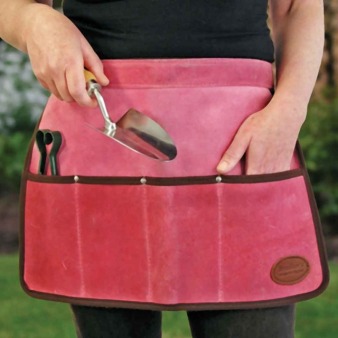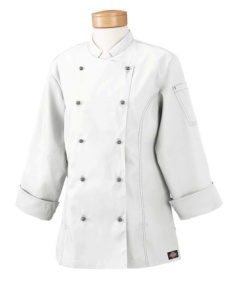
Photo by Pixabay on Pexels.com
The thing Mary enjoyed most since moving into the loft apartment in historic St. Charles was her daily morning strolls along the riverfront, especially now that autumn had arrived. On this particular day, the up-again-down-again temperatures so characteristic of fall in the Midwest caused a thick fog to rise from the water, wrapping her in a cloak of grey mist. Vibrant red, gold, and orange leaves hovered like clouds around the trees and carpeted the ground like so many crunchy area rugs.
It felt magical.
“A steaming mug of mulled cider might chase the chill off your bones, eh, Missy?”
The gruff voice startled Mary. She hadn’t noticed the tall, gaunt man approaching. He wore a heavy wool pea coat and a captain’s hat – strange attire for both the season and the circumstances. The dark, grizzled beard that framed his face contrasted sharply with his pasty complexion.
A reenactor, she thought.
It seemed that St. Charles hosted one festival or another almost every weekend… Scottish Games, Oktoberfest, Legends and Lanterns… No doubt there was some steamboat thing coming up that she hadn’t heard about.

Mary smiled at the man. “Good morning, Captain.”
He groaned. “Fog’s too thick. Might be a good morning if a man didn’t have to leave his home just to get a glimpse of the river.”
Mary continued her walk, paying no attention to what the man said. It was a conversation in passing, nothing more. After all, she had more important things on her mind.
Mary didn’t know what she would do if she didn’t find a part-time job soon. With rent coming due in a little over a week and barely enough left in her savings to cover it, her immediate future looked rather bleak. She hoped her lunch interview with Donna, the owner of the Mother-in-Law House Restaurant, would go well. It wasn’t easy finding work that didn’t conflict with her class schedule at Lindenwood University. Waitressing at the Victorian-themed restaurant would be a perfect fit and the place was an easy walk from her apartment in the top floor of the historic Odd Fellows Hall.
Mary left the park at Jefferson Street and started the uphill climb to the campus. Two classes before her meeting with Donna would keep her busy. Hopefully she wouldn’t have time to get nervous about the interview.
Three hours later, Mary arrived at the Mother-in-Law House to meet with the owner. A matronly woman dressed in Victorian-style clothing rose from an elegantly arranged table to greet her.

Mary said, “I hope I haven’t kept you waiting. It took me a little longer to walk here from campus than I thought it would.”
The woman smiled. “Don’t be silly. You’re precisely on time. Please, sit.”
Glancing around the dining room, Mary noticed that all the tables were full. One lone server bustled about trying to see to the patrons’ needs and comfort. A good sign, she thought. Donna certainly needs more help.
As the server approached to fill their water glasses, Mary said, “I really appreciate you taking time out of your schedule for this interview. I hope it’s not too much of an imposition.”
“Actually, I wanted you to see us this busy.”
Before Mary could speak her goblet overturned, spilling water everywhere. “Oh my goodness, I am so sorry,” she exclaimed. “I’m not usually so clumsy. I don’t know how I did that.”
The server arrived with towels and began cleaning up the table.
“My dear, you didn’t turn over the glass,” the woman said with an enigmatic smile. “That’s just Christina’s ghost trying to get your attention.”
“Ghost?” Mary gulped. “You have a ghost?”
“The mother-in-law for whom this restaurant is named felt quite neglected in life, so she stays here demanding to be noticed in the afterlife. I hope the haunting doesn’t deter you from wanting to work here.”
Mary chewed at her lower lip. She didn’t believe in ghosts. Was Donna wacko or just messing with her? It didn’t really matter. She needed this job.
“No, of course not. What’s a little haunting among friends?” Mary hoped that remark didn’t come off as too flippant.
“It took me a while to get used to the idea, but I promise you the specter haunting this place is not a mean spirit. None of the ghosts of St. Charles are evil.”
“There are others?”

The woman nodded. “I saw on your application that you’re a student at Lindenwood.”
“Yes,” Mary answered.
“Have you heard Mrs. Sibley play the piano?”
“No. Who is Mrs. Sibley?”
“They say that the ghost of Mary Sibley, who founded Lindenwood as a girls’ school, remains there. One of her favorite pastimes seems to have been playing the piano. If the tales are to be believed, she still performs on occasion.”
At the risk of blowing the interview, Mary blurted, “Are you teasing me? Ghosts are just a figment of sad people’s imaginations.”
“My dear, I was just as skeptical as you are until I had my own experience.”
Impatient with this turn of the conversation, Mary asked, “So who are these other ghosts?”
“Let’s see, there’s the elegant French couple that likes to visit Winery of the Little Hills and Bradden’s Restaurant; the little girl who plays with the antique toy sewing machine in the quilt shop; the riverboat captain who’s still angry because The Crow’s Nest down the street blocks his view of the river; and the banker who opens and closes the door to the vault in the old Odd Fellows Hall.”
“The Odd Fellows Hall?” Mary gasped. “That’s where I live. Upstairs in the studio apartment, I mean. There’s a dead banker inhabiting that building?”
“He only haunts the main floor. That place has quite a history and has served several different purposes. At one time it was a bank and the safe is still there. People who work in that space see and hear the vault door opening and closing sometimes. It’s quite heavy, so it’s not as if the wind could move it.”

The pair sat quietly for a few moments. Mary’s companion watched her face turn pale as she processed this information. Finally the younger woman found her voice.
“I have a question. Is there a festival coming up this week that has to do with steamboats or something?”
“No. Why do you ask?”
“Because I hate to admit it, but I think I met your riverboat captain this morning.”
The woman chuckled. “I’m not surprised. He likes to wander the riverfront on foggy mornings. And now you’ve experienced The Mother-in-Law, Christina. There are more spirits about, but I don’t want to frighten you so much that you won’t take the job.”
“What did you say?”
Smiling, the matronly woman replied, “I offered you the server’s job. As you can see, we really need help. If you can work the supper shifts, someone from the evening staff can be moved to help during the luncheon rush.”
“Evenings are perfect for me,” Mary said.
“Great! Can you start tonight around 5?”
“Yes. Thank you!”
“There is one condition.”
Mary asked, “What’s that?”
“It might sound crazy, but every time you arrive for a shift you must tell Christina hello and every time you leave, you must say, ‘Goodnight, Christina. We love you.’ She doesn’t act out as often when she knows she’s welcome here and that people care about her.”
As Mary rose from the table, she winked and whispered, “See you later, Christina. I love you.”
“I love you, too, my dear.”
What a peculiar thing for Donna to say, Mary thought. Turning to leave, she collided with a dark-haired lady dressed in a flattering black pantsuit, jarring her off balance.
Mary took the woman by the elbow to steady her and apologized. “Pardon me. Are you okay?”
With a kind smile, the lady said, “I’m fine. You must be Mary. I’m sorry I’ve kept you waiting so long. Don’t go before we’ve had a chance to chat.” She extended her hand and continued, “Pardon my bad manners. I’m Donna. Please sit and have some lunch with me while we talk.”
“I’m confused,” said Mary. “I thought it was Donna who offered me the job.”

Photo by Pixabay on Pexels.com
As she turned to gesture toward the matronly woman with whom she’d been speaking, Mary’s eyes widened in shock. Both chairs at the table were empty. It was as if the woman had vanished. No way could she have left the area without passing by.
“I don’t understand,” she said. “She was sitting right across from me at this table no more than a few seconds ago. She told me I could start work tonight.”
Donna patted Mary’s shoulder and said, “That must have been our resident ghost, the original Mother-in-Law. If she thinks you’re the one for the job, that’s good enough for me. But if you don’t have to leave right away, please stay and have lunch with me. I suspect you could use a bite to eat…and maybe a nice glass of wine…after meeting Christina.”
©2018 Janet Y. Bettag, All rights reserved.
































 Imagine, if you will, how entertaining our Easter celebration became in the company of people plagued by irrational fears.
Imagine, if you will, how entertaining our Easter celebration became in the company of people plagued by irrational fears.